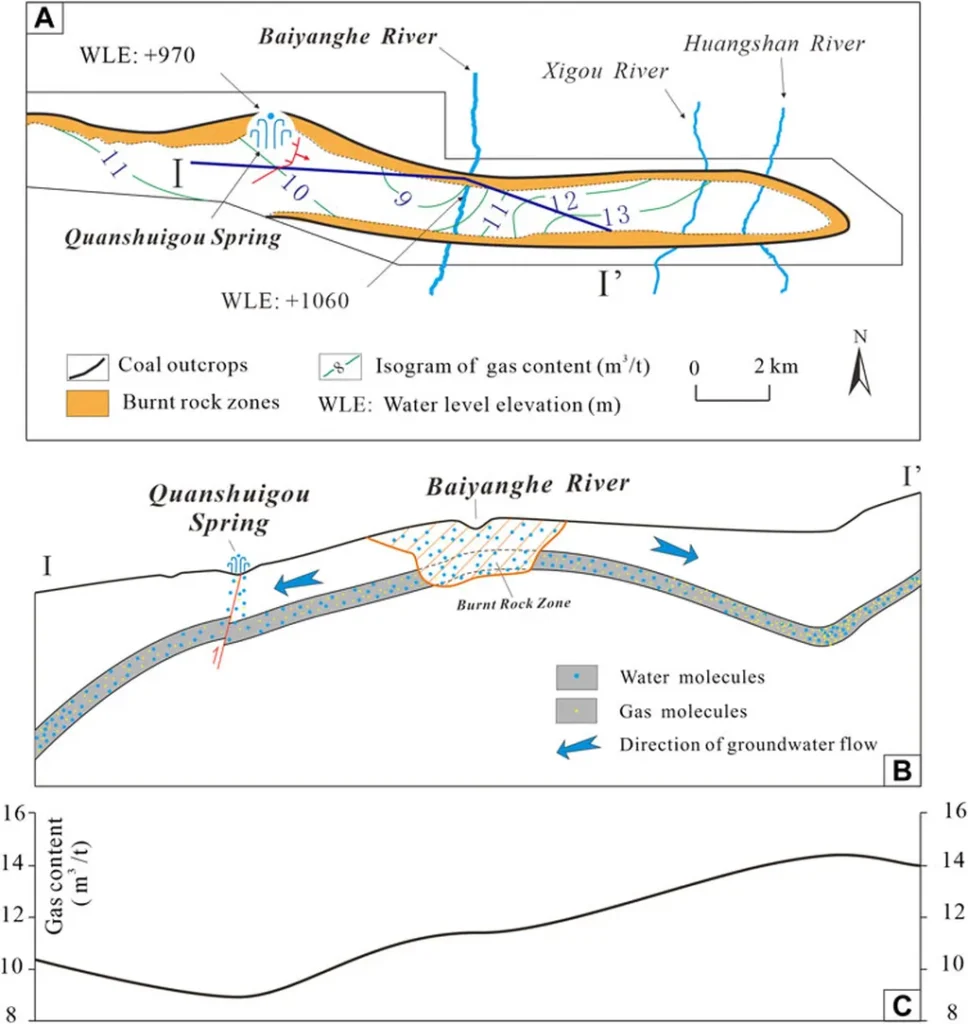In the heart of China’s Henan province, researchers are unlocking new secrets to tapping into the vast energy potential of coalbed methane, a clean-burning natural gas trapped within coal seams. Their work could significantly impact the energy sector, particularly in the exploitation of low-permeability coal rock reservoirs, a challenging but increasingly important frontier in energy extraction.
Dr. Li Bo, a leading researcher from the School of Safety Science and Engineering at Henan Polytechnic University, has been spearheading an experimental study on guided hydraulic fracturing under true triaxial conditions. The goal? To better understand and optimize the process of extracting coalbed methane from these tight reservoirs.
Hydraulic fracturing, or fracking, is a well-known technique in the oil and gas industry. It involves injecting fluid into a wellbore to create cracks in deep rock formations, allowing natural gas or oil to flow more freely. However, applying this technique to low-permeability coal rock reservoirs presents unique challenges.
“In low-permeability reservoirs, the coal rock is very tight, making it difficult for the gas to flow,” Dr. Li explained. “Our study aims to understand how hydraulic fractures expand under these conditions and how we can optimize the process to enhance gas recovery.”
The research team conducted a series of true triaxial guided hydraulic fracturing tests on low-permeability rock samples containing prefabricated cracks. They varied the horizontal stress differences and fluid injection rates to observe the expansion patterns of the cracks under low filtration loss conditions.
Their findings revealed several key insights. For instance, increasing the fluid injection rate tended to create a single, straight fracture, with a more significant impact on crack length than width. Moreover, both the hydraulic fracture initiation pressure and sustained expansion pressure increased with the fluid injection rate.
Perhaps most intriguingly, the study found that decreasing the minimum horizontal principal stress while keeping the maximum horizontal principal stress constant led to a decrease in the crack initiation pressure. This finding could have significant implications for optimizing fracking operations in the field.
“The hydraulic force can change the crack propagation path from inclined curvature to a gentle one,” Dr. Li noted. “This understanding can help us design more effective fracturing strategies.”
The research also showed that increasing the injection rate and horizontal principal stress difference led to an increase in the total injection volume of rock damage, indicating that the volume of the fracture increased under low leaching losses.
These findings could pave the way for more efficient and effective coalbed methane extraction, potentially unlocking vast new energy resources. As the world seeks to transition to cleaner energy sources, understanding how to tap into these resources more effectively becomes increasingly important.
The study, published in the Journal of Mining Science and Technology (矿业科学学报), offers a promising step forward in this endeavor. As the energy sector continues to evolve, research like this will be crucial in shaping its future trajectory.
For now, Dr. Li and his team continue to delve deeper into the complexities of hydraulic fracturing, driven by the potential to make a significant impact on the energy landscape. Their work serves as a testament to the power of scientific inquiry in driving technological advancement and shaping the future of energy extraction.

